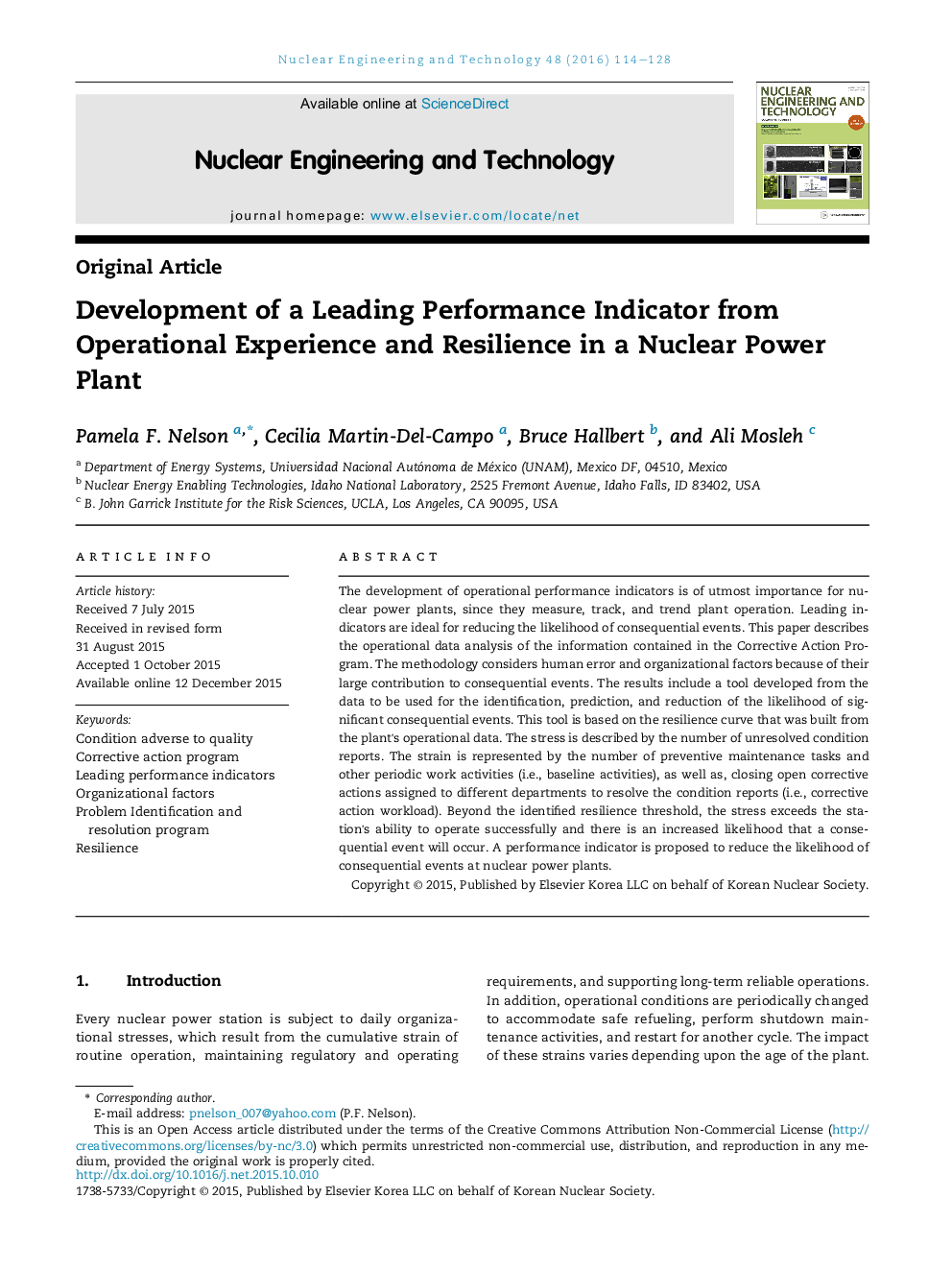| Article ID | Journal | Published Year | Pages | File Type |
|---|---|---|---|---|
| 1740005 | Nuclear Engineering and Technology | 2016 | 15 Pages |
The development of operational performance indicators is of utmost importance for nuclear power plants, since they measure, track, and trend plant operation. Leading indicators are ideal for reducing the likelihood of consequential events. This paper describes the operational data analysis of the information contained in the Corrective Action Program. The methodology considers human error and organizational factors because of their large contribution to consequential events. The results include a tool developed from the data to be used for the identification, prediction, and reduction of the likelihood of significant consequential events. This tool is based on the resilience curve that was built from the plant's operational data. The stress is described by the number of unresolved condition reports. The strain is represented by the number of preventive maintenance tasks and other periodic work activities (i.e., baseline activities), as well as, closing open corrective actions assigned to different departments to resolve the condition reports (i.e., corrective action workload). Beyond the identified resilience threshold, the stress exceeds the station's ability to operate successfully and there is an increased likelihood that a consequential event will occur. A performance indicator is proposed to reduce the likelihood of consequential events at nuclear power plants.
